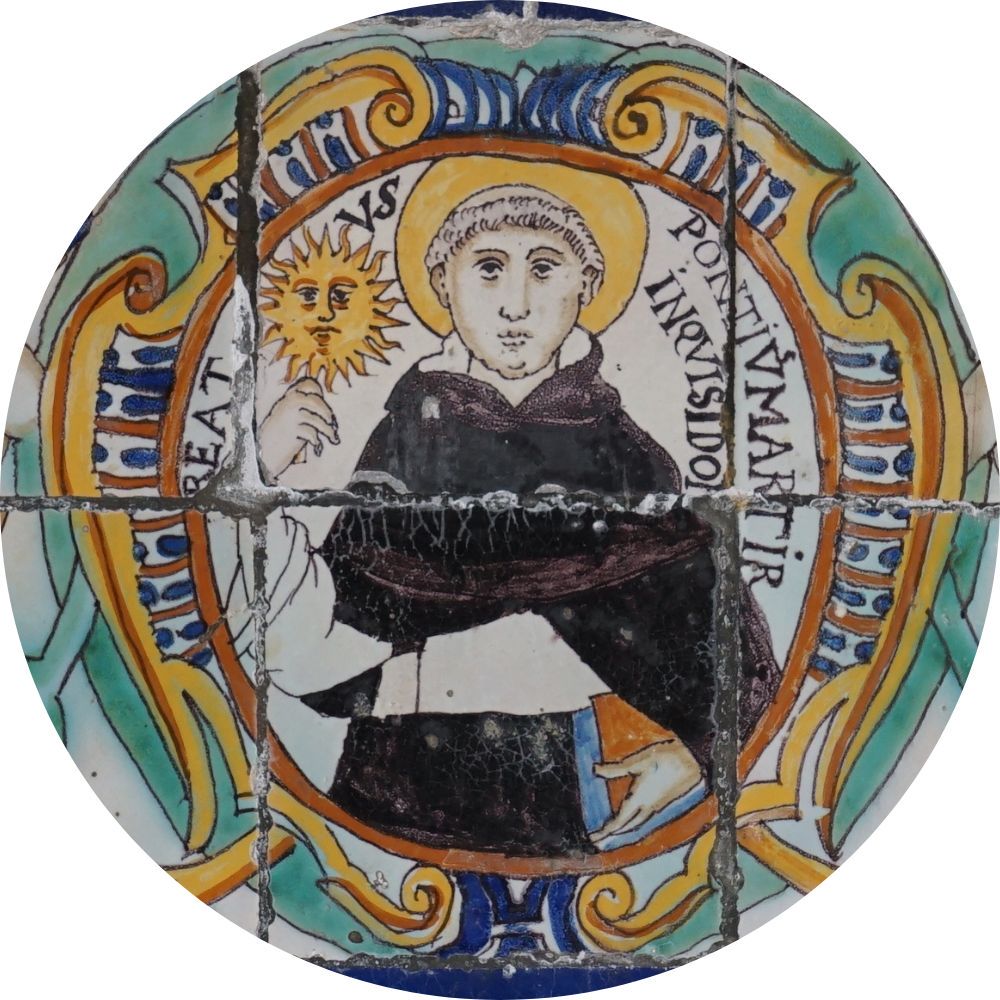Pontius of Blanes
Pontius of Blanes
(† 1242)
According to the authors of the Annèe dominicaine, Pontius was born in Moià in the diocese of Vich in Catalonia. In 1219, he joined the Dominican order in Barcelona. In 1230, he became the first prior of the just-founded monastery of Lleida. He was also an inquisitor in the Kingdom of Aragon, operating mainly in the Diocese of Urgell. In 1242, after several years of inquisition activity in the region, he was poisoned by heretics near Castelbo. The chapter of the cathedral church, along with the bishop, citizens and a large number of people, arrived at the site of his death to have his body transferred to Urgell Cathedral, where he was also buried. At that time, the Dominicans did not have a monastery in the city. Immediately his tomb became famous for miracles. François Diago, in his Historia de la Provincia de Aragon de la Orden de Predicadores, reports that when the martyr's tomb was opened in 1598 with the permission of the Urgell Cathedral chapter, his head was seen preserved in perfect condition, along with his clothes, which were still stained with the blood he shed when he was dragged away by heretics after his death.
Stephanus de Salaniaco wrote about his miracles: "Per idem tempus passus est apud Urgellum, Cathalonie civitatem, et veneno ab hereticis propinato extinctus fr. Poncius de provincia Hispanie, inquisitor, et in ecclesia cathedrali civitatis illius honorifice est sepultus multisque miraculis usque hodie dicitur coruscare" ["At the same time he suffered in Urgel, a city of Catalonia, and was quenched by the poison of heretics, Br. Pontius from the province of Spain, an inquisitor, and was honorably buried in the cathedral of that city, and is said to sparkle with many miracles to this day"].
In later hagiographic and historical works dedicated to the Dominican Order, their authors claimed that he was blessed, although in fact his cult was never approved by the Catholic Church. However, the Order of Preachers enjoyed the cult of the Blessed almost to the beginning, as also evidenced by the ceramic decoration in the Dominican monastery in Lima. The Polish Dominican priest Michal Siejkowski also mentions him in his calendar, stating that he is venerated as blessed, and gave his memory under the date of May 29. However, there were other Toulouse martyrs, William Arnaud and companions, venerated under this date. The new 19th edition of the Annèe dominicain gives Pontius' memory under February 1, which he celebrated along with Bernard of Trevesères, who was also among the Dominican figures in the Lima cloister of San Domingo.
In iconography, Pontius is depicted with a glass of poison and a sun in his right hand. The poison glass is a reminder of how he suffered a martyr's death, while the sun refers to the miraculous event that took place immediately after his death. Well, when the procession went from Urgell to Castelbo to collect his body, despite the night, the sun continued to light their way all the way to the city gates.
Bibliography:
- Stephanus de Salaniaco, Bernardus Guidonis, De quatuor in quibus Deus Praedicatorum Ordinem insignivit, ed. Th. Kaeppeli, Romae 1949 (Monumenta Ordinis Fratrum Praedicatorum historica, 22), pp. 24,25, 161.
- Diago F., Historia de la Provincia de Aragon de la Orden de Predicadores, [Barcelona 1599], k. 8.
- Fontana V.M., Monumenta dominicana. Breviter in synopsim collecta, de eidis obsequiis ab Ordine Praedicatorvm Sanctae dei Ecclesiae usque modo praestitis, Roma 1675, p. 48.
- Siejowski M., Dni roczne Dni Roczne Swiętych, Błogosławionych, Wielebnych y Pobożnych Sług Boskich Zakonu Kaznodzieyskiego, S. Oyca Dominika, Kraków 1743, k. B2
- Annee dominicaine ou vies des saints des bienheureux, des martyrs et des autres personnes illustres ou recommandables par leur piété. De l’un et de l’autre sexe de l’Ordre des Frères Prêcheurs distribuées suivant les jours de l'année. Nouvelle édition. Revue et annotée par des religieux du même Ordre. Février, Lyon 1884, pp. 1-9 (reprinted in: Dominicus, Trois inquisiteurs martyrs Pons, Bernard et Pierre, martyrs à Urgel (Espagne), au XIIIe siècle, „Le Sel de la Terre”, 62 (2007), pp. 144-152).
- Lea H.-Ch., A History of the Inquisition of the Middle Ages, vol. 2, New York 1888, s. 167 (French edition: Histoire de l’Inquisition au Moyen-Age, vol. 2: L’inquisition dans les divers pays de la chrétienté, Paris 1901, p. 198).
- Ames C.Ch., Rigtheous Persecution. Inquisition, Dominicans and Christianity in the Medlle Ages, Philadelphia 2009 (The Middle Ages Series), p. 65 (Polish translation: Inkwizycja i Bracia Kaznodzieje. Słuszne prześladowanie, transl. A. Gomola, Poznań 2013, p. 116).
- Smith D.J., Crusade, Heresy and Inquisition in the Lands of the Crown of Aragon (c. 1167-1276), Leiden-Boston 2010 (The Medieval and Early Modern Iberian World, 39), p. 101.

